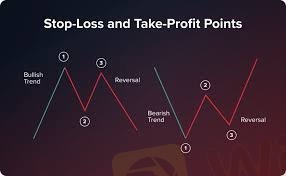
2024-12-24 00:46
IndustryStop-loss vs reduced exposure: Managing Christmas
#reducingvsclosingpositionsaroundchrismasmichriches#
*Stop-Loss Strategy*
1. *Set a stop-loss level*: Determine a price level at which to automatically close a position if it moves against you.
2. *Limit potential losses*: Stop-loss orders can limit potential losses if the market moves against your position.
3. *Risk management*: Stop-loss orders can help manage risk by automatically closing positions that reach a certain loss threshold.
4. *Potential drawbacks*: Stop-loss orders can be triggered by market volatility, resulting in unnecessary closures.
*Reduced Exposure Strategy*
1. *Reduce position sizes*: Decrease the size of your positions to minimize potential losses.
2. *Diversify portfolios*: Spread investments across various asset classes to reduce reliance on individual assets.
3. *Lower risk*: Reducing exposure can lower potential losses if the market moves against your positions.
4. *Potential drawbacks*: Reducing exposure may also limit potential gains if the market moves in your favor.
*Key Differences*
1. *Risk management approach*: Stop-loss strategies focus on limiting losses through automatic closures, while reduced exposure strategies aim to minimize losses by reducing position sizes.
2. *Market volatility*: Stop-loss strategies can be triggered by market volatility, whereas reduced exposure strategies are less susceptible to market fluctuations.
3. *Potential gains*: Reduced exposure strategies may limit potential gains, whereas stop-loss strategies do not directly impact potential gains.
*Choosing the Right Strategy*
1. *Risk tolerance*: Consider your risk tolerance and adjust your strategy accordingly.
2. *Market analysis*: Evaluate market conditions and adjust your strategy based on potential market movements.
3. *Trading goals*: Align your strategy with your trading goals, whether prioritizing risk management or potential gains.
Ultimately, a combination of both stop-loss and reduced exposure strategies may be the most effective approach to managing Christmas trading risk.
Like 0
FX1985175646
交易者
Hot content
Industry
Event-A comment a day,Keep rewards worthy up to$27
Industry
Nigeria Event Giveaway-Win₦5000 Mobilephone Credit
Industry
Nigeria Event Giveaway-Win ₦2500 MobilePhoneCredit
Industry
South Africa Event-Come&Win 240ZAR Phone Credit
Industry
Nigeria Event-Discuss Forex&Win2500NGN PhoneCredit
Industry
[Nigeria Event]Discuss&win 2500 Naira Phone Credit
Forum category

Platform

Exhibition

Agent

Recruitment

EA

Industry

Market

Index
Stop-loss vs reduced exposure: Managing Christmas
 Nigeria | 2024-12-24 00:46
Nigeria | 2024-12-24 00:46#reducingvsclosingpositionsaroundchrismasmichriches#
*Stop-Loss Strategy*
1. *Set a stop-loss level*: Determine a price level at which to automatically close a position if it moves against you.
2. *Limit potential losses*: Stop-loss orders can limit potential losses if the market moves against your position.
3. *Risk management*: Stop-loss orders can help manage risk by automatically closing positions that reach a certain loss threshold.
4. *Potential drawbacks*: Stop-loss orders can be triggered by market volatility, resulting in unnecessary closures.
*Reduced Exposure Strategy*
1. *Reduce position sizes*: Decrease the size of your positions to minimize potential losses.
2. *Diversify portfolios*: Spread investments across various asset classes to reduce reliance on individual assets.
3. *Lower risk*: Reducing exposure can lower potential losses if the market moves against your positions.
4. *Potential drawbacks*: Reducing exposure may also limit potential gains if the market moves in your favor.
*Key Differences*
1. *Risk management approach*: Stop-loss strategies focus on limiting losses through automatic closures, while reduced exposure strategies aim to minimize losses by reducing position sizes.
2. *Market volatility*: Stop-loss strategies can be triggered by market volatility, whereas reduced exposure strategies are less susceptible to market fluctuations.
3. *Potential gains*: Reduced exposure strategies may limit potential gains, whereas stop-loss strategies do not directly impact potential gains.
*Choosing the Right Strategy*
1. *Risk tolerance*: Consider your risk tolerance and adjust your strategy accordingly.
2. *Market analysis*: Evaluate market conditions and adjust your strategy based on potential market movements.
3. *Trading goals*: Align your strategy with your trading goals, whether prioritizing risk management or potential gains.
Ultimately, a combination of both stop-loss and reduced exposure strategies may be the most effective approach to managing Christmas trading risk.
Like 0
I want to comment, too
Submit
0Comments

There is no comment yet. Make the first one.

Submit
There is no comment yet. Make the first one.